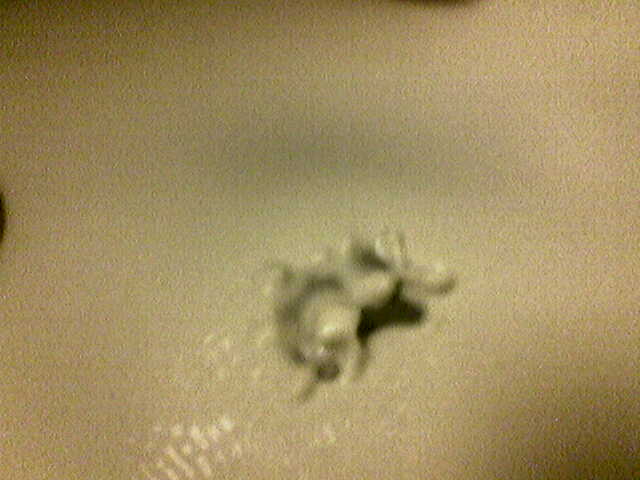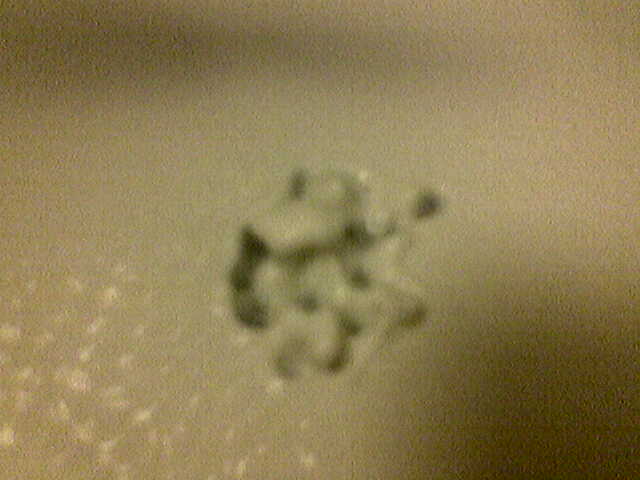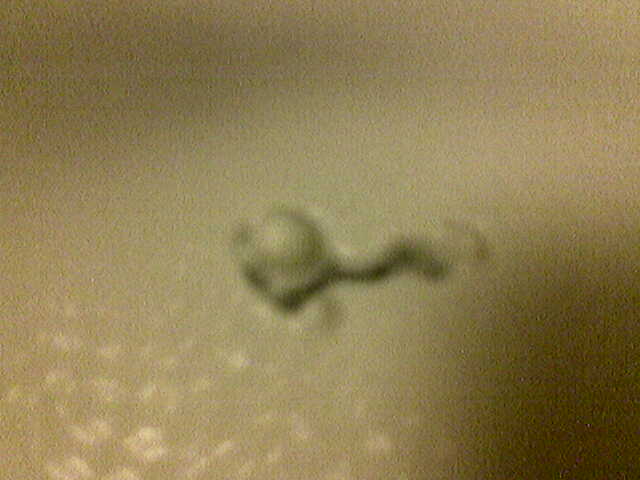Michael Fourman >> fun
zea mais villi—Cornflour Fingers

The novel phenomenon of cornstarch fingers has recently been reported (Merkt, Deegan, et. al., "Persistent Holes in a Fluid", Phys. Review Letters. 92 184501 (2004)). We were able to reproduce these effects at home.




30 October 2004 - joint work with Robin Fourman
A cornflour and water mixture is dilatant or shear-thickening. If you stir it gently it behaves like a liquid, but, if you try to stir more briskly, it thickens—to the point of behaving like a solid.
This gives rise to some strange behaviours! It's easy to make a mixture that behaves like thin cream—until you press the surface hard with your finger, which feels an unyielding solid. You can run a toy car across the surface—but when the car stops, it sinks.
You can pick it up and form solid balls that turn to liquid when thrown at all far—but if you throw them quickly at the work-surface, you can see a slight bounce before they turn fluid.
It is interesting to observe that thickening happens in tension as well as in compression. A thin stream of slurry pours easily. A thick stream forms a ribbon that can be pulled and broken. This observation is critical to our explanation of the formation of fingers.
Experiment
Achieving the 15G-30G accelerations (corresponding to amplitudes of approx 0.25mm-0.5mm at 120Hz) applied by Merkt et al., without mechanical coupling, poses a difficulty. Our baking tray had a natural vibration mode with a frequency of approximately 120 Hz. We were able to achieve the effects shown by inducing resonant vibration in this mode.
A shallow layer of cornstarch slurry in water was oscillated by playing a sinusoidal wave at 120Hz through a loudspeaker. A 120Hz sine waveform was generated on an iMac computer using Audio Tool Box, and played through a Harmon-Kardon Soundsticks sub-woofer at maximum volume. The container, a sheet-metal baking tray (approx 8" x 12"), was held on top of the loudspeaker, and manually adjusted to induce resonant sympathetic vibration. The base of the baking tray, the tray being old and much (ab)used, was not absolutely flat; the layer depth varied from zero to 3mm.
We used cornflour, consisting of 100% cornstarch (fine flour ground from zea mais), from Sainsbury's supermarket. The powder was six months past its sell-by date, but showed no signs of deterioration. A mixture was prepared by combining approx. 170g of cornstarch with 150g cold tap-water.
- Mixture (about half of this quantity was used)
- 170g Cornflour (Sainsbury's)
- 150g Cold tap water
- Wave Generator
- Audio Tool Box
- Sound System
- Harmon Kardon SoundSticks (subwoofer 20W)
- Recording Equipment
- Nokia 6230 cellphone
Further Investigations
In this section under construction we discuss further observations undertaken to answer some questions left open by Merkt et al.
- How do holes stay open?
- What sets their size?
- How can the fingerlike protrusions grow and remain upright?
- What drives the transition to the delocalized state?
Observations of isolated droplets of slurry under vibration—they form columns.
Observations of solid objects supported on the surface of the slurry—they stand up.